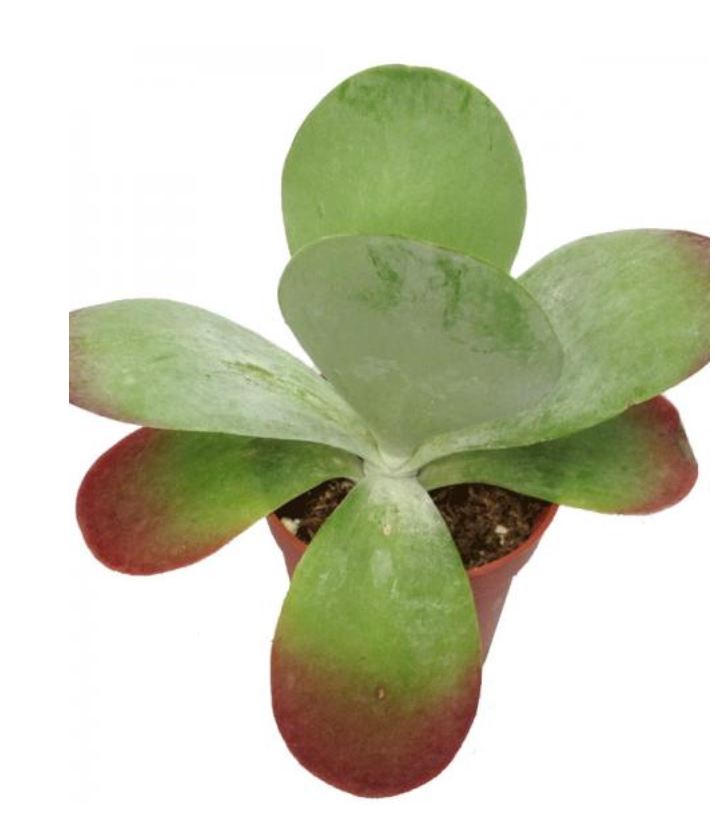- Empty cart.
- Continue Shopping

₹249.00
Add to cartFlapjack Kalanchoe
₹249.00
With its large, red-rimmed leaves, Flapjack Kalanchoe (Kalanchoe thyrsiflora) is a tropical stunner. Flapjack Kalanchoe is appropriately nicknamed for the fleshy leaves that stack one on top of the other like pancakes. This interesting plant, which reaches heights of up to 2 feet at maturity, is also known as paddle plant, desert cabbage and dog tongue. At maturity, the plant develops a spiky, dark yellow bloom. Flapjack Kalanchoe is often grown as an indoor plant, but it can grow outdoors in U.S. Department of Agriculture plant hardiness zones 9 through 11.
21 in stock
 Maya / Pre-sale Questions
Need Help? Contact Us via WhatsApp
Maya / Pre-sale Questions
Need Help? Contact Us via WhatsApp
DISCLAIMER Please Bear in Mind That Plant Image May Slightly Different From Actual Plant in Terms of Color Due to the Lighting During Photo Shooting or the Monitor's Display
1. Plant Flapjack Kalanchoe flapjack where it receives several hours of bright sunlight but is protected during the hottest part of the day. Avoid total shade, which causes the plant to become long and spindly. Sunlight brings out the intense red leaf edges.
2. Water Flapjack Kalanchoe deeply whenever the top of the soil feels dry and let the soil dry before watering again, as Kalanchoe rots quickly in muddy soil. Check the leaves often during the winter months, and water only when the leaves begin to appear shriveled.
3. Spread a thin layer of sand or gravel on the soil around the plant to moderate soil moisture, drainage and temperature. Arrange the material so it doesn\’t contact the stem, as sand or gravel may become hot enough to damage the plant.
4. Feed the plant every other month during spring and summer, using a general-purpose fertilizer diluted to half strength. Alternatively, use a fertilizer formulated specifically for cacti and succulents. Withhold fertilizer during the winter months. Never over-feed Flapjack Kalanchoe, as succulents are slow-growing plants that are damaged by too much fertilizer.
5. Dig up the Flapjack Kalanchoe and remove the original parent plant when it dies at the end of the blooming season. Replant the offsets that grow at the base of the parent plant to keep the plant vibrant and healthy long-term.
Only logged in customers who have purchased this product may leave a review.
Shipping Details
- Please pay more attention to your order address which MUST MATCH your shipping address. (If you’re from Bangalore, Please leave your full name with alternate mobile no. It is very important)
- Items will be shipped within 6-7 business days after payment.
- Please check items when delivered, if damaged, please kindly accept it and contact us immediately. We will make a confirmation and resend you a new one.
| Shipping By | Shipping Cost | Estimated Delivery Time | Tracking Information |
| MPMT | Free Shipping above 1000 Rs | 6-7 days Standard Estimate Time for Plants | Available Click Here |



















Reviews
There are no reviews yet.